All products featured are independently chosen by us. However, SoundGuys may receive a commission on orders placed through its retail links. See our ethics statement.
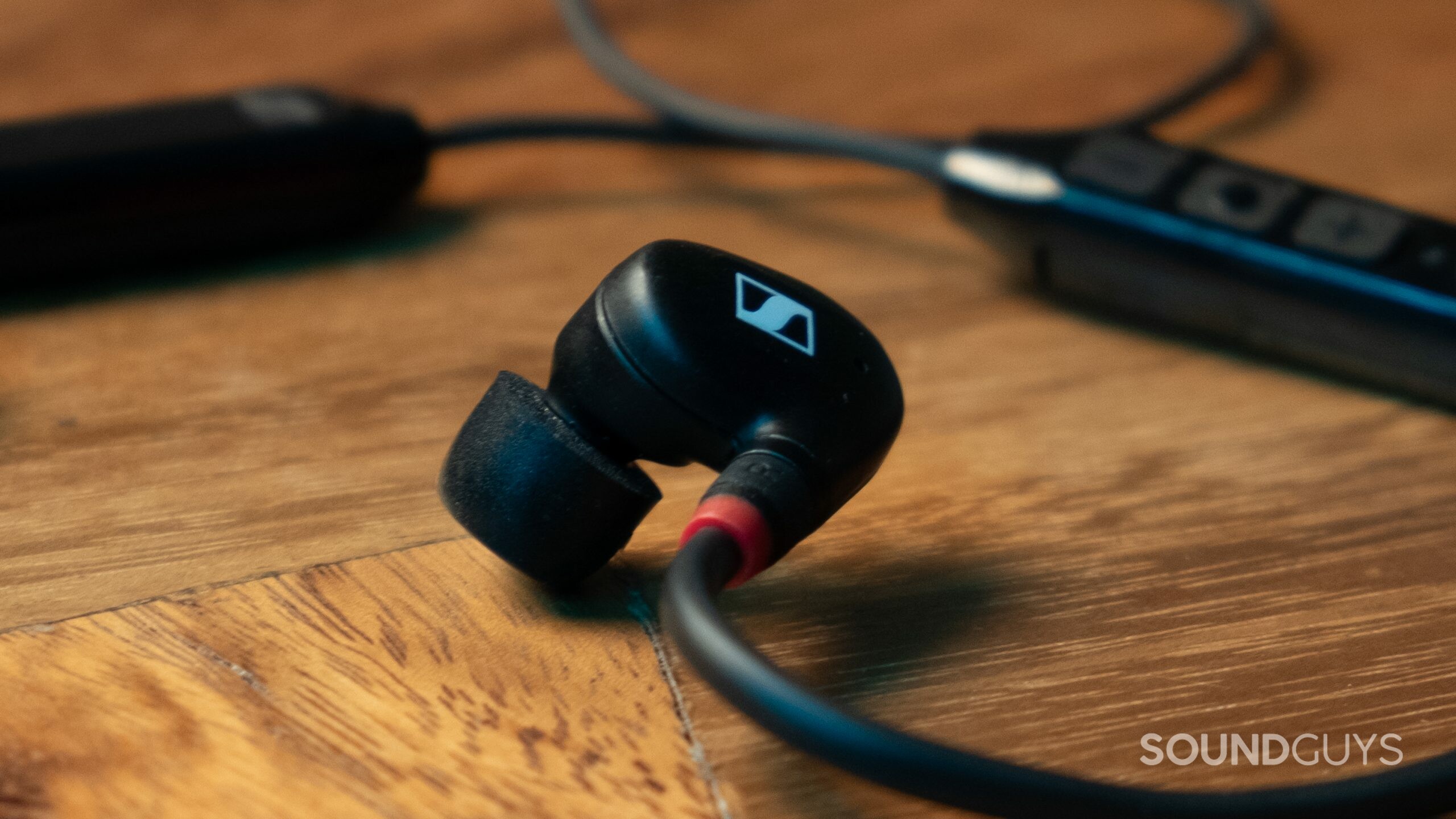
Sennheiser IE 100 PRO Wireless review
September 19, 2023
Sennheiser IE 100 PRO Wireless
With live music returning to our lives, you may find yourself thinking of upgrading your stage in-ear monitors. Maybe you want to go wireless, or you want something that can easily move from the stage to your Bluetooth device to listen to your favorite streaming service. If that sounds like a lot of roles for one set of earphones, you might be surprised to learn that the Sennheiser IE 100 PRO Wireless is the solution to your problem.
Editor’s note: this Sennheiser IE 100 PRO Wireless review was updated on September 19, 2023, to update charts, add the Sennheiser IE 200, Sennheiser CX Plus True Wireless, and Sennheiser CX True Wireless to Alternatives, and to answer FAQ.
Musicians who need in-ear monitors (IEMs) for live music can get this for a fairly reasonable price. Anyone who likes in-ear wireless or wired options with good sound quality can take advantage of interchangeable cables. People who want aptX Low Latency can listen lag-free, with a compatible source device.
What’s it like to use Sennheiser IE 100 PRO Wireless?
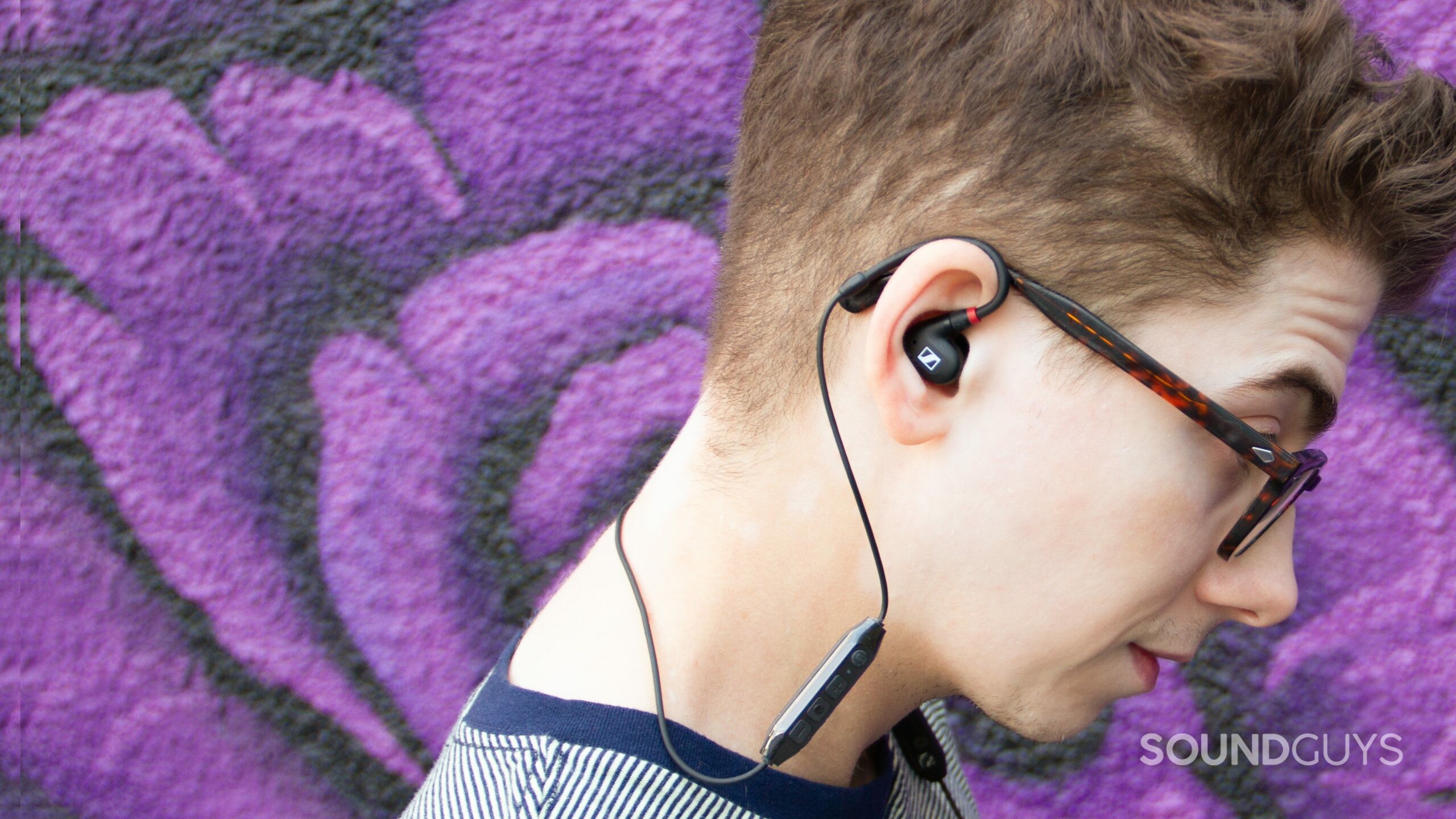
Sennheiser is bringing a lot of built-in flexibility with the IE 100 PRO. You can swap the Bluetooth module (IE PRO BT Connector) out for a standard 3.5mm cable, which turns this wireless headset into a wired one. Only the IE PRO BT Connector has a microphone, and it has a polarizing design that mimics exercise earphones. The cable is an odd length and two glossy blocks jostle around your neck. With a mask and glasses on, the over-ear cabling is difficult to stabilize against the ears.
The Sennheiser IE PRO BT Connector works with any Sennheiser earbuds and supports a host of Bluetooth codecs, chief among them is aptX and aptX Low Latency (LL), the latter of which really lives up to its title. Performing live music with latency feels impossible because you go out of sync very quickly. If you use a laptop or aptX LL-compatible smartphone in your live music, you can bypass the sound guy and just send the signal from the laptop to the IE 100 PRO. (Keep in mind that you might have Bluetooth capability with the IE PRO BT Connector, but the equipment the engineer has could be entirely analog.)
How do you control the IE 100 PRO BT Connector?
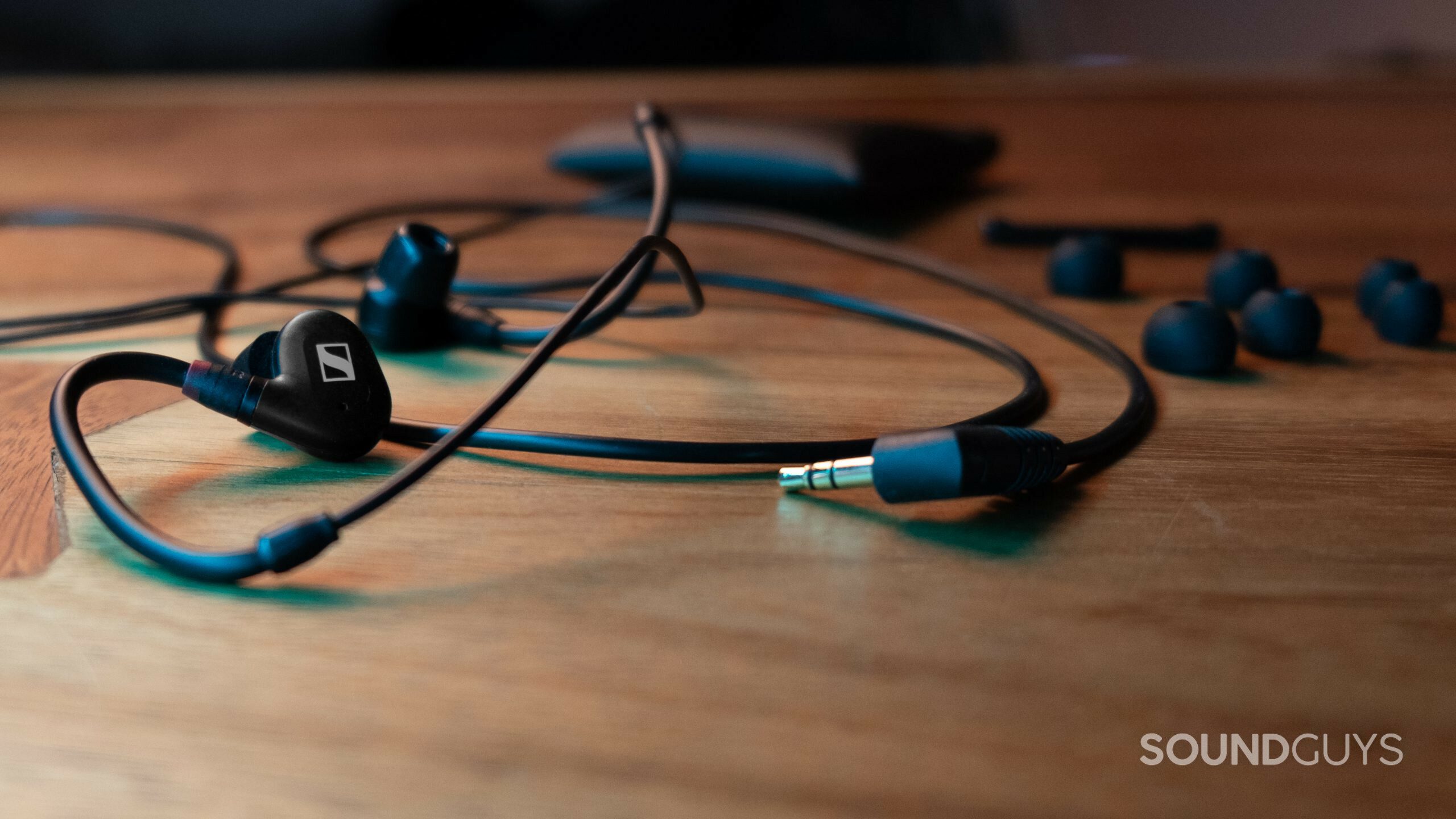
The right module has a USB-C charge port and buttons for music control and voice assistant access. Hold the multi-function button for a couple of seconds to enter pairing mode. The lights will blink blue and red. Hold it longer to turn it off. When connected, one press of the multi-function button will pause or play your audio. A double-press skips to the next track. The cable length the control module is attached to is just too short to see it, so you’ll need to rely on tactile memory when in-ears.
Your Sennheiser IE 100 PRO Wireless bundle comes with a few goodies, including both a hardwired headphone jack cable, and the Bluetooth module. You can buy these separately if you need to replace them, too. The IE 100 PRO comes in black, red, and clear colorways. No matter which you go with, Sennheiser provides a basic vinyl cloth pouch to protect the buds between gigs.
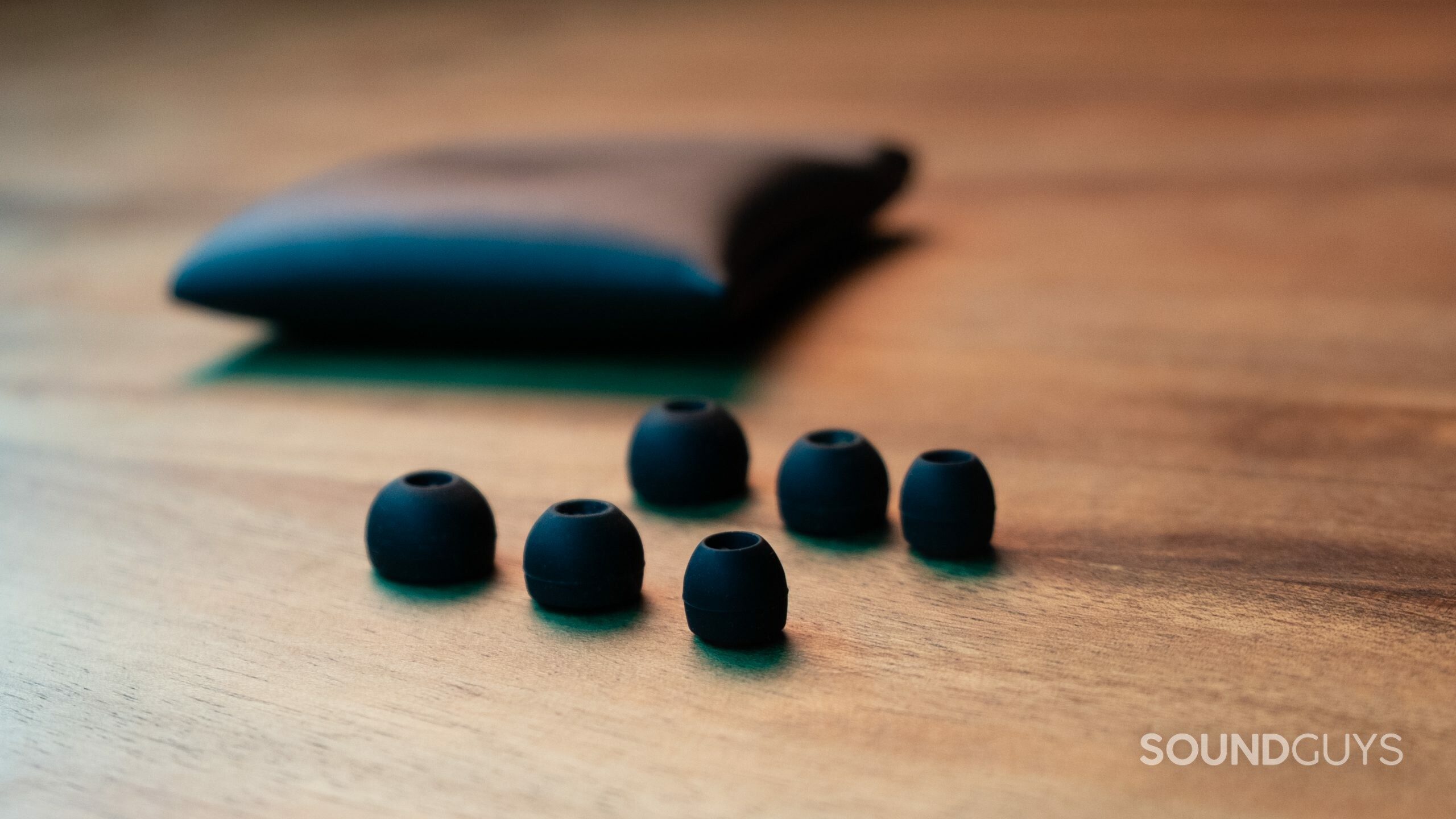
You get three silicone ear tips and one set of medium-sized foam ear tips. Generally, foam ear tips offer the best fit because you can squish them and they fit around your anatomy to create a great seal. Including only one size of the foam ear tips is a pretty obvious cost-cutting measure on Sennheiser’s part. I’d like to see a complete size run in the box. You also get a cleaning tool, which is super helpful when dealing with small earphones.
Given that wires are usually the first thing to give out, the option to replace them is highly appealing. From a sustainability perspective, it prolongs the lifespan of your Sennheiser earphones. The IE 100 PRO Wireless also ships with a two-year warranty. In addition, the IE PRO BT Connector works with the other IE monitors in the Sennheiser line.
How is the Sennheiser IE 100 PRO Wireless for live music performances?
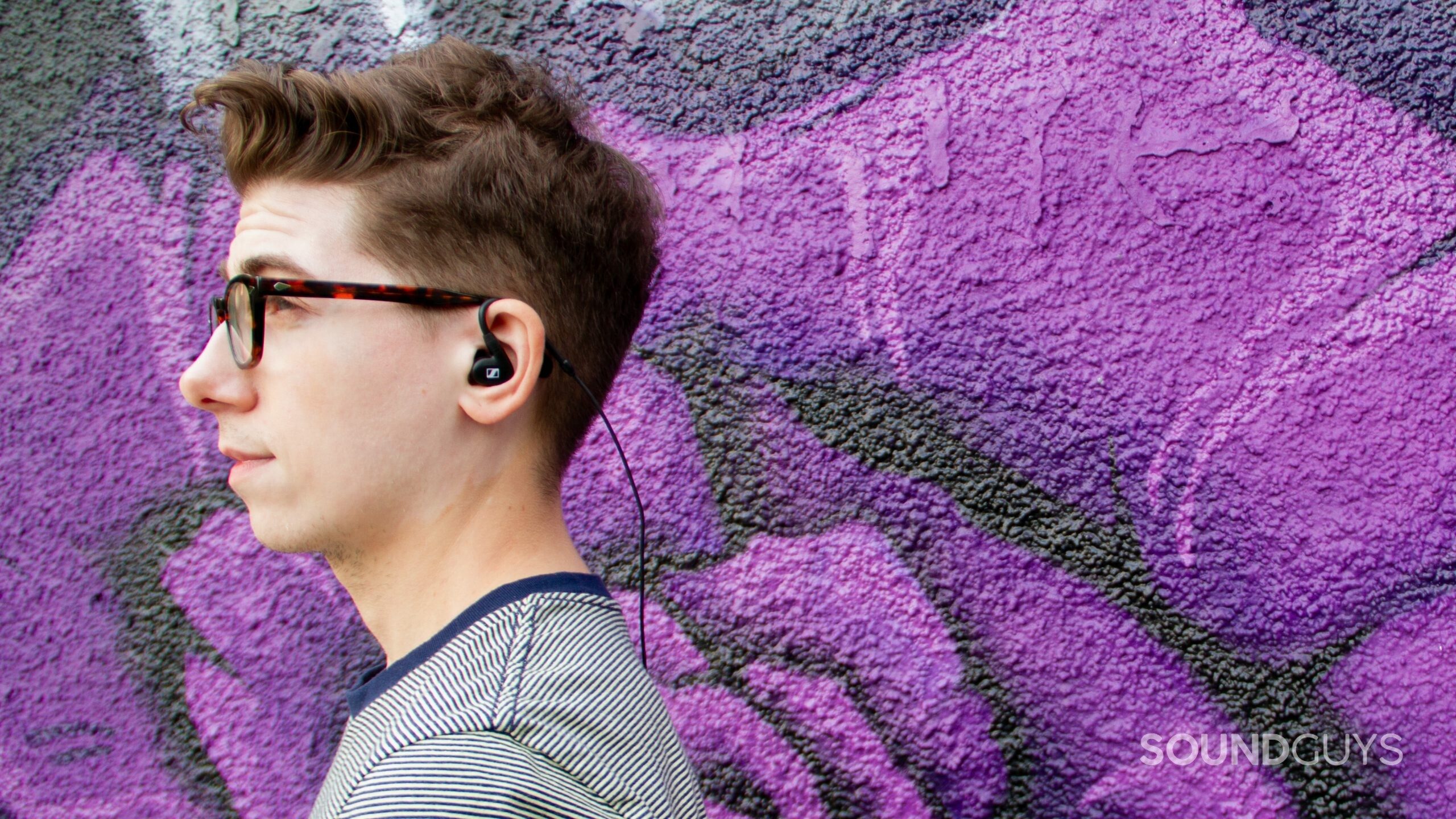
The IE 100 PRO somewhat isolates my environmental sounds, while the sound in the earbud monitors comes through clearly. On a stage, this is essential for a good monitor, because you want to hear a bit, but not too much of your environment. I experimented at home and created two new tracks: one for vocals, and one for guitar. With the IE 100 PRO connected to the headphone output on the audio interface (in lieu of a wireless receiver), the earbuds transmitted the mix in-time.
Sweatproofing for products that get used on stages ought to be an industry standard, unfortunately, the IE 100 PRO does not have it.
While there are other ways to hear your mix as you perform, on-stage IEMs give you the benefit of isolation, which can help preserve your hearing, and lets you clearly hear your bandmates. The one major feature this headset is missing is an IP rating, after all most of us sweat a bit on stage. I’d like some guarantee that my IEMs won’t quit on me under the hot stage lights.
You need a transmitter and receiver sending the mix to the earbuds. Basically, the IE 100 PRO plugs into a wireless receiver. Alternatively, your laptop or sound mixer’s hardware can send a Bluetooth signal to the IE PRO BT Connector attached to the buds. Your sound guy would have the transmitter and receiver typically.
What Bluetooth codecs does Sennheiser IE 100 PRO Wireless support?
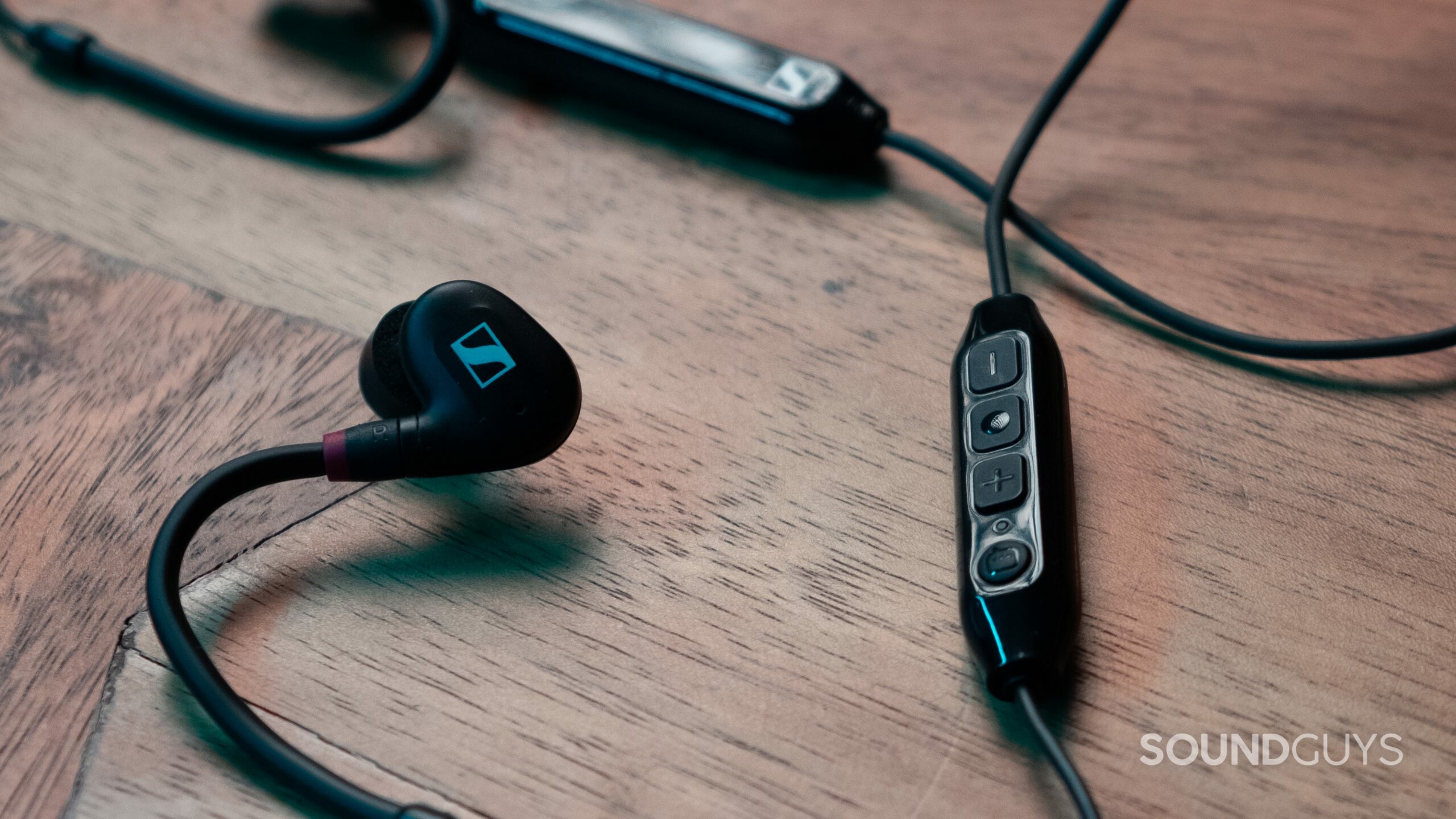
Sennheiser kitted out the IE 100 PRO Wireless with Bluetooth codec support. You get SBC, AAC, aptX, and aptX Low Latency from the Bluetooth 5.0 module. For just listening to music, aptX is the best choice for sound quality. Meanwhile, folks performing live music or watching YouTube videos should choose aptX Low Latency.
This degree of codec support at this price really allows the IE 100 PRO Wireless to punch above its price. It’s something fairly unique as the aptX Low Latency codec appears rarely in earbuds. Apple users will only get use out of AAC or SBC, but Apple has done a decent job of optimizing latency over AAC.
How long does the Sennheiser IE 100 PRO Wireless battery last?
Unfortunately, you don’t get any quick charge with the Sennheiser BT Connector, so make sure you spare 90 minutes to juice it. Once fully charged you get a solid 8 hours and 50 minutes of battery power for the Sennheiser IE 100 PRO Wireless. Our test is performed by playing 75dB(SPL) of audio until the unit’s battery fully drains, so our results may vary from the manufacturer’s claims. In any case, if the battery goes, you’ve always got the optional headphone jack to listen while the Bluetooth module recharges.
Does the Sennheiser IE 100 PRO Wireless have good isolation?
Loading chart ...
It can be difficult to get a good fit with the IE 100 PRO. If the included memory foam ear tips fit you, that’s a nice start. The Sennheiser monitors do a good job of reducing how much external noise your ears get exposed to across frequencies, but notably where the most important notes of music reside. This means you can still hear your live sound without competing with outside sounds and compelling you to crank it louder. Even so, it does not reduce much of the highs compared to other in-ear buds out there, but it attenuates more lows than the average isolating buds.
How does the Sennheiser IE 100 PRO Wireless sound?
Loading chart ...
The frequency response of the IE 100 PRO looks a bit like if you combined elements from the SoundGuys headphone preference curve with our ideal studio headphones frequency response chart. Say if you took the treble from the studio headphones ideal and mixed it with the mids and lows of the consumer headphones ideal chart.
With a frequency response like this, it seems Sennheiser wants you to use the IE 100 PRO to listen for pleasure and for monitoring. However, in the end these earbuds are still working with engineering limitations like small driver size — you won’t be blown away by bass, but it’s pretty reasonable.
Loading chart ...
Both our consumer and studio house curves have around a 5dB bump at 3kHz, which the IE 100 PRO does not have. At 4kHz and higher, when compared to our studio headphones curve, the Sennheiser earbuds match up quite well. Meanwhile, when measured against the consumer-friendly chart the mids and bass only really deviate by approximately 3dB, with the IE 100 PRO bumping the volume beginning at 200Hz and through the sub-bass frequencies.
Lows, mids, and highs
It’s not perfect, but the IE 100 PRO combines a modest bass bump with a reasonable studio-like treble response. This works well for listeners who desire a fairly neutral frequency response, with a bit of bass emphasis. As for in-ear monitoring for performances, the lack of extremes translates to musicians hearing basically every part of the music without significant auditory masking.
Choosing a track with quite a bit happening, Tondo by Disclosure featuring Eko Roosevelt, the IE 100 PRO reveals some bassy oomph. While not chest-thumping, the bass is effectively loud and doesn’t hide other frequencies. Clean guitar sits neatly in the right panned ear, surprisingly never overwhelmed by the obviously louder mixed vocals.
Hold up! Something’s different:
This review contains microphone demos using our old system. We have since purchased a Bruel & Kjaer 5128 test fixture (and the appropriate support equipment) to update our testing and data collection. It will take a while to update our backlog of old test results, but we will update this review (and many others!).
We’ve made a big improvement to how we demonstrate the microphone performance of products we review. We now use a standardized test setup that plays back pre-recorded phrases from a calibrated artificial mouth in our test chamber, either with or without simulated background noises, simulated reverberant spaces, or artificial wind. This means that samples from every product can be directly compared, which makes it far easier to make meaningful comparisons between products in terms of the raw speech quality or the product’s ability to reject noise.
These new mic demos will be made obvious in each new sample which begins with the phrase, “This is a SoundGuys standardized microphone demonstration …”
Thank you for bearing with us, and we hope to see you again once we’ve sorted everything out.
Can you use the Sennheiser IE 100 PRO Wireless for phone calls?
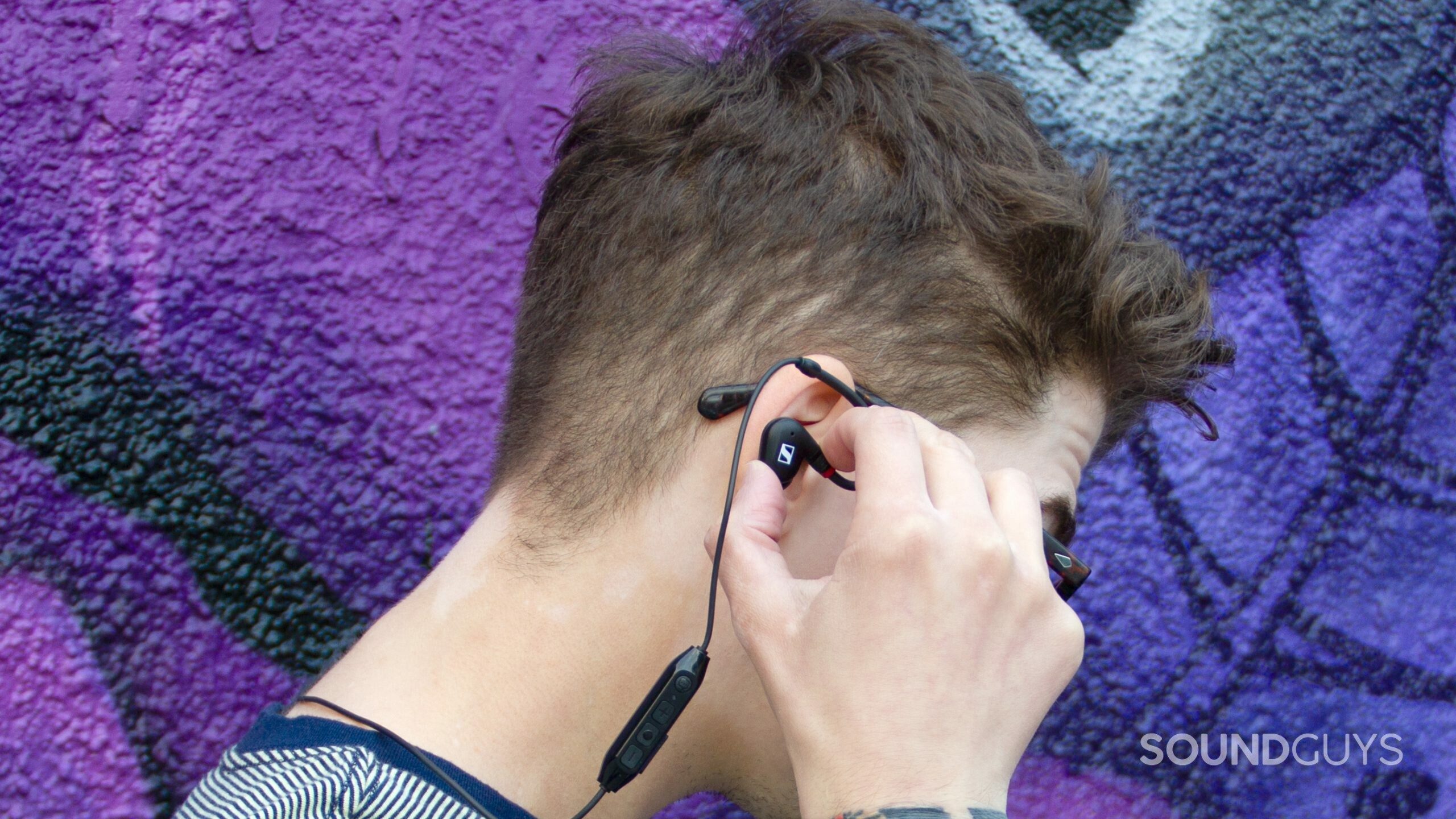
Leave it to the professionals at Sennheiser, who manufacturer some high-end microphones to do a decent job with the onboard mic. The mic onboard the Bluetooth module captures voices with accuracy. It picks up some environmental noise, though your voice cuts through anyway. The only obvious flaw is due to the fact that the mic sits suspended on a cable, and therefore captures any movement against your clothes.
Sennheiser IE 100 PRO Wireless microphone demo:
How does this microphone sound to you?
As of December 10, 2021, nearly 83% of respondents have rated the mic sample somewhere between “okay” and “good,” which is quite good for an integrated microphone like this.
Sennheiser IE 100 PRO Wireless vs Sennheiser IE 300
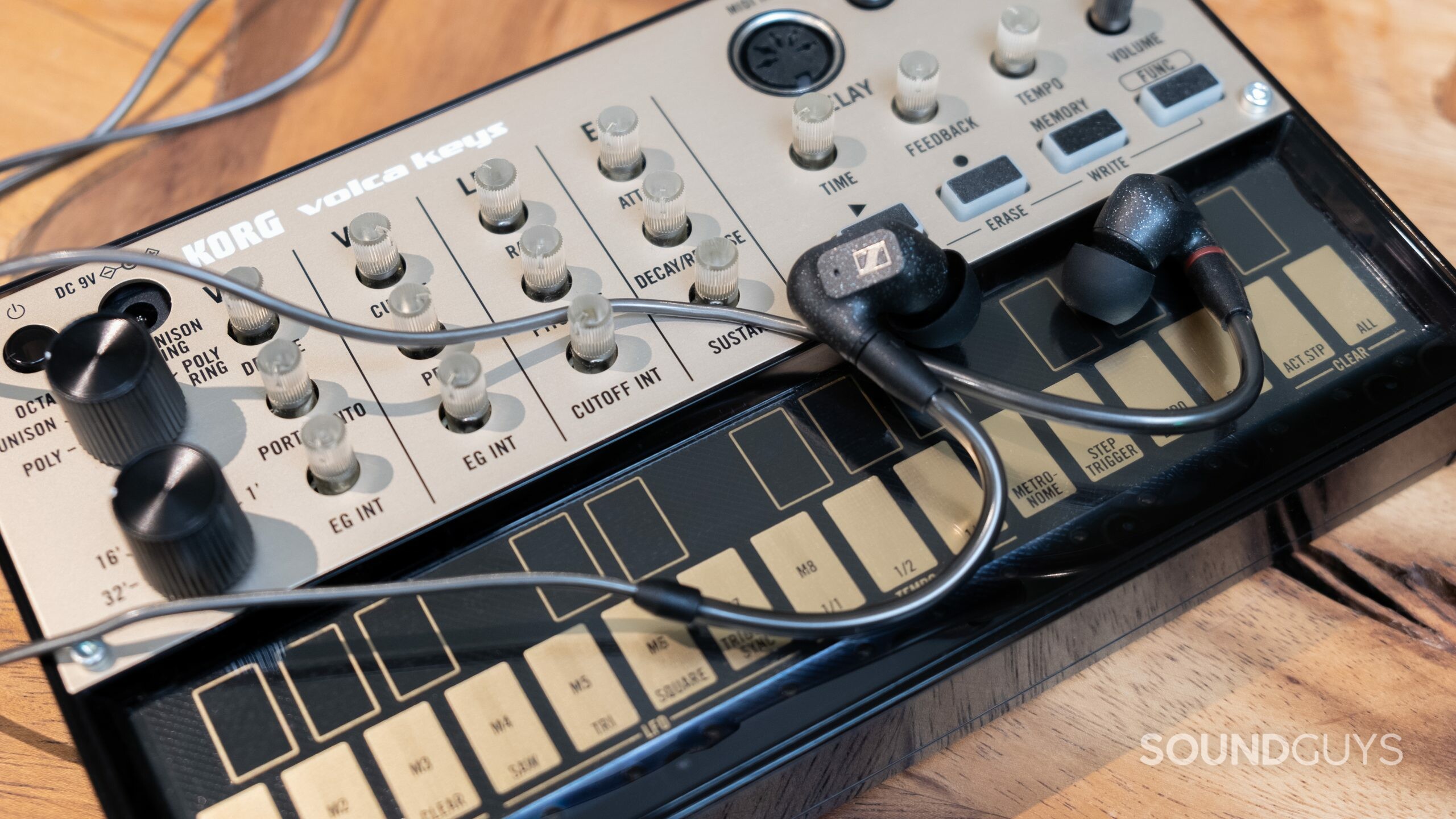
In the same line as the Sennheiser IE 100 PRO Wireless is the wired Sennheiser IE 300 for more money. Conveniently, the IE PRO BT Bluetooth module is compatible with the IE 300, so you could buy one separately, just as the IE 100 PRO can be purchased without Bluetooth too.
The Sennheiser IE 300 arrives with a greater selection of ear tips and a better case. In terms of build quality, both feel quite similar and include removable cables. The IE 300 has lower distortion than the IE 100 PRO when wired.
Loading chart ...
Your choice mainly comes down to whether you prefer the frequency response of one over the other, and cost. The IE 300 shifts the emphasis to different frequencies than the IE 100 PRO Wireless. So, the IE 300 has slightly more bass boost and under-emphasized treble compared to the IE 100 PRO Wireless. The IE 100 PRO Wireless produces a little less sub-bass (though it’s similarly aligned with our consumer house chart) and a little more treble.
For stage use, the IE 100 PRO Wireless is the better choice, given the wireless flexibility. Apart from that, it’s all personal preference, but controversial opinion: It’s hard to justify the price hike of the IE 300, even though I like it and find it slightly more comfortable. Unless you’re looking at the IE 300 as the value proposition compared the Sennheiser IE 900, in which case, buy both.
Should you buy Sennheiser IE 100 PRO Wireless?
If you just want a nice set of wireless earphones, the IE 100 PRO has a pleasant frequency response and excellent connectivity. The host of codecs alone makes it one of the few wireless earphones that won’t let your video drop out of sync with the audio.
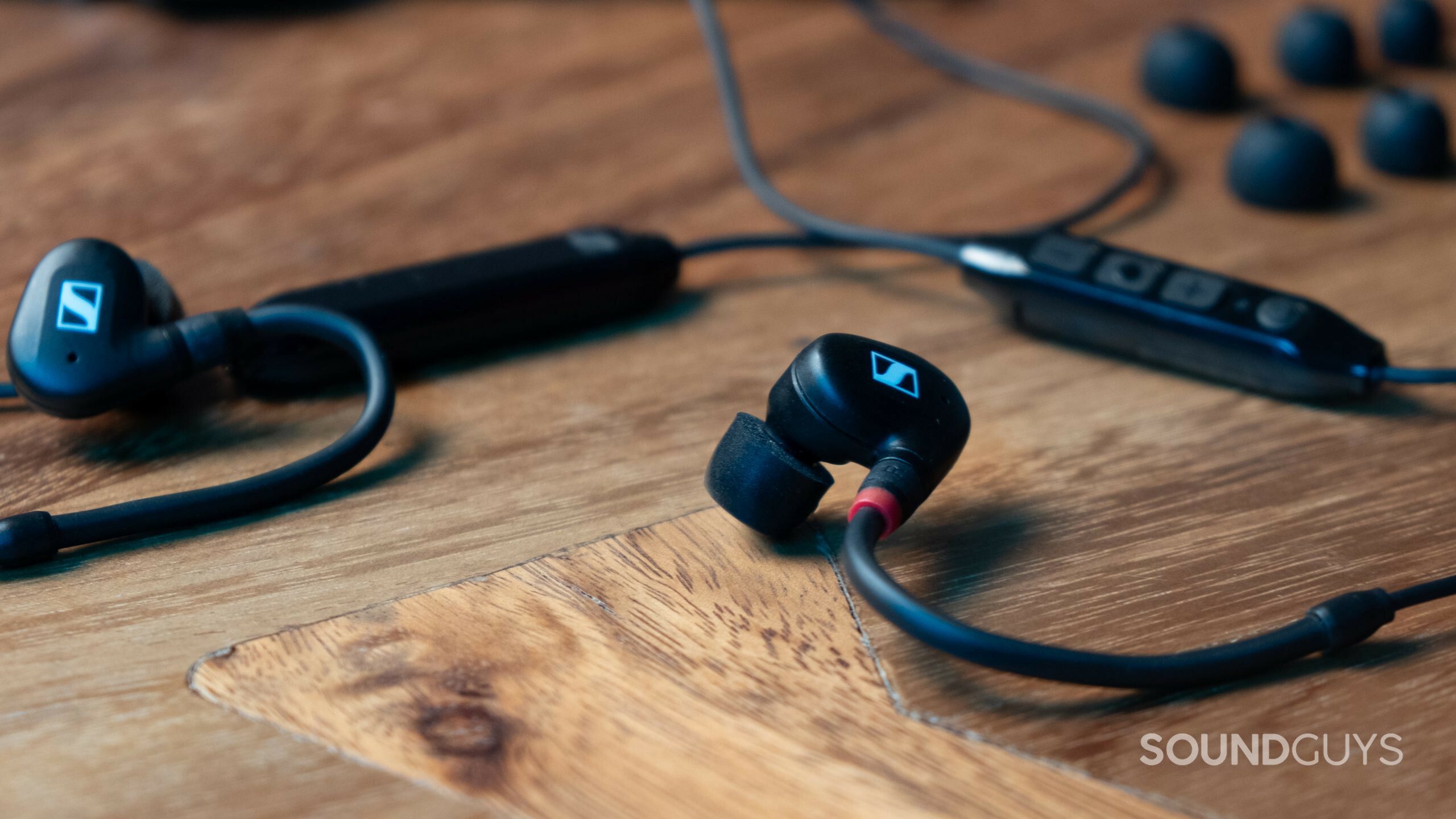
But if you’re a performing musician and want to use these for a show, you may want to think twice. While no issues cropped up during this review period, Bluetooth isn’t nearly as reliable as a radio signal (the industry’s standard solution to wireless in-ear monitors), nor does Bluetooth have as wide of a range. In this way, the IE 100 PRO Wireless bundle is quite specialized. For the person looking exactly for this product, nothing else will do the job as effortlessly.
Like a lovable mutt, the IE 100 PRO Wireless is the perfect choice for the stage performer who also wants an everyday earbud. For the rest of us, it's an oddball mix.
Conversely, it is nice to be able to get more functionality out of your in-ear monitors, besides just using them for gigs. Plus, it’s more exciting to consider earphones that can double as daily drivers in addition to your on-stage monitors. You could easily take the IE 100 PRO with you on a commute, whether hardwired or over Bluetooth. While connected to the Sennheiser IE PRO BT Connector, the microphone works well enough to handle phone calls, and all the buttons work intuitively.

What should you get instead of the Sennheiser IE 100 PRO Wireless?
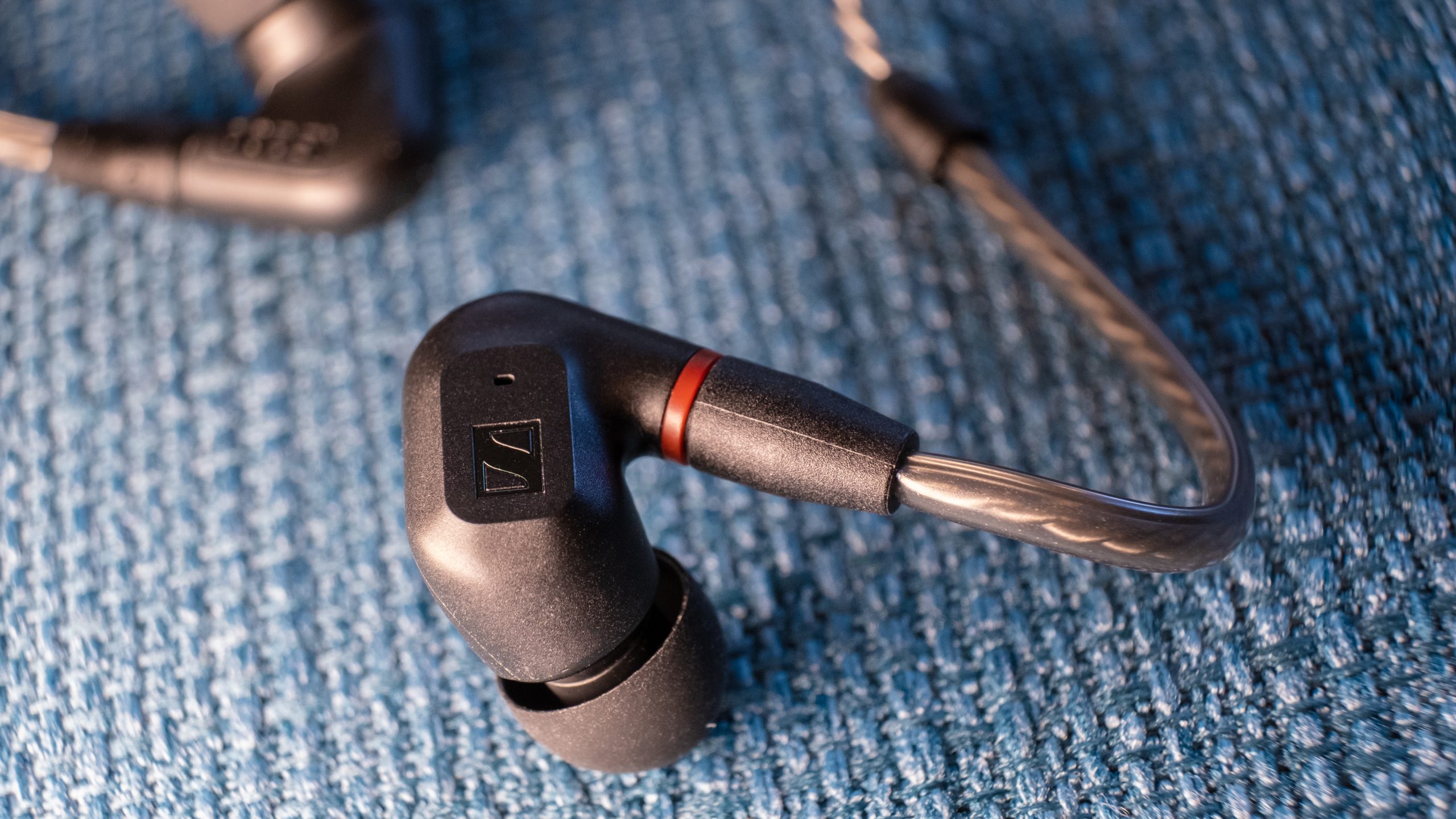
For the wired-only crowd the Sennheiser IE 200 is an excellent sounding set of IEMs worthy of consideration. They come in at a somewhat accessible pricepoint ($119 at Amazon), and they’re comfortable, well-made, and unpretentious.
If you want a straight-up cabled in-ear monitor, try the Shure SE215. It isolates better than the IE 100 PRO Wireless, making it easier than usual to hear your vocals or instrument during live performances, and runs $99 at Amazon. In that case, it’s more like choosing between which flavor you like better: the Sennheiser or Shure.
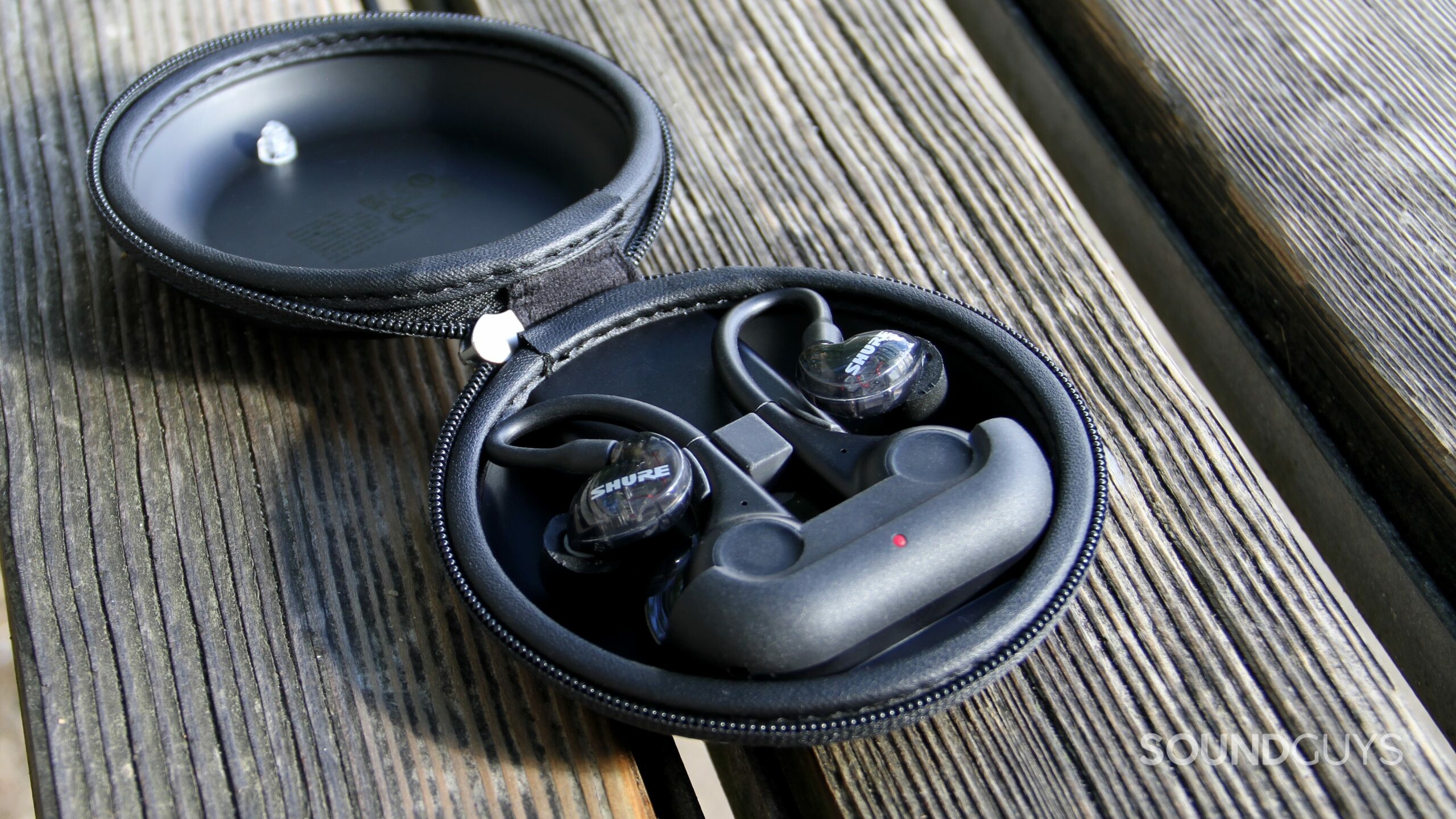
More interesting is Shure’s solution to the awkward semi-cabled in-ear monitoring proposition with the AONIC 215 Gen 2 True Wireless ($229 at Amazon). Like IE 100 PRO Wireless, the earbuds detach and can also work with a cable, however, each bud has its own battery pack and wraps over the ear. You don’t get any cable mess to deal with, or microphones knocking into your neck. It also comes with aptX codec support, so you shouldn’t have any issues keeping latency to a minimum. It’s basically like the Shure SE215, but with true wireless capabilities. You can even purchase your own cabling separately to switch like you can with the IE 100 Wireless Pro. This costs more money, however.
The downside of the AONIC 215 Gen 2 is that while it sounds great, and isolates superbly too, the charging case has a design flaw: the guides that secure the hooks have so little give, it’s easy to overstress contact points and internally damage wiring.
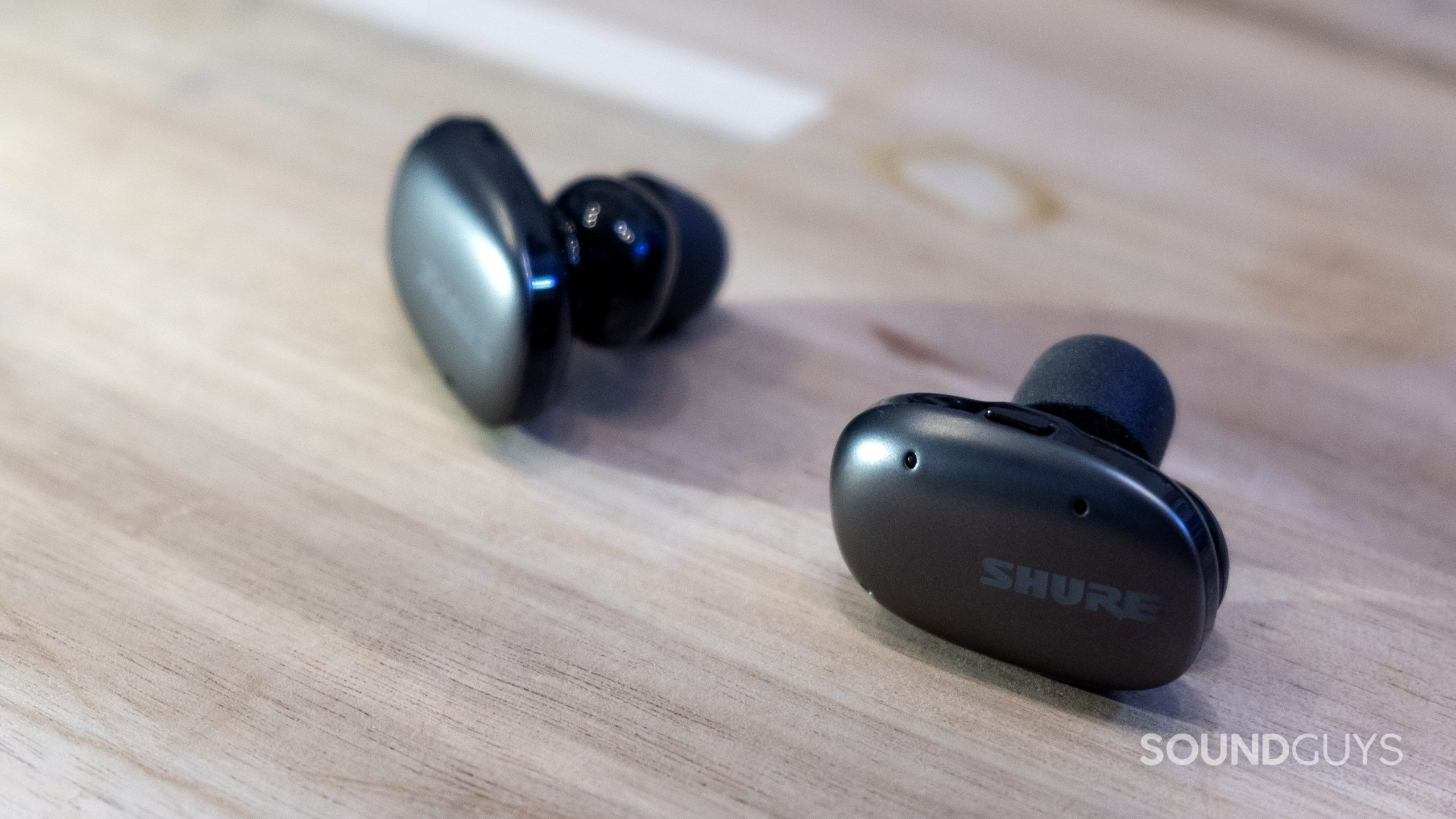
Conversely, maybe there’s a good reason why manufacturers tend to make two different products for wired and wireless uses. If you want a similar sound quality, you could grab the excellent Shure AONIC Free ($199 at Amazon) which works more like a conventional set of true wireless earbuds, with a great sound and isolation. The intent is not use these buds as IEMs. It does not have any wired capabilities, but just buy a separate set of wired IEMs for that. This way you won’t stress any connection points through repeated connections and disconnections.
Lastly, for the most conventional true wireless earbuds experience, consider the Sennheiser CX Plus True Wireless (active noise canceling for $89 at Amazon) or the Sennheiser CX True Wireless, if you don’t want noise canceling for $79.95 at Sennheiser. These come with aptX codec, okay battery lives, and a good fit. You’ll get Sennheiser tuning, plus a useful app with an equalizer.
Frequently asked questions about the Sennheiser IE 100 PRO Wireless
Yes, so you can pretty much connect any of the Sennheiser IE range to the BT module that ships with the Sennheiser IE 100 PRO Wireless.
To clear up confusion, a radio transmitter and receiver still usually has a wired set of IEMs plugged in, such as the IE 100 PRO. Otherwise, if you have a laptop for live performances you’re connecting to, the IE 100 PRO Wireless is a super simple solution through Bluetooth effectively bypassing the sound guy.
On the other hand, if you’re working with a professional sound guy sending you the audio signal from the board, there’s a very high chance there’s no Bluetooth signal. Your sound guy in this instance probably has a radio transmitter pack, in which case you can plug your wired connection in. Radio transmitters are much more expensive than Bluetooth, so unless you are the sound guy, you probably just need something to plug into the transmitter pack. Before you buy the Sennheiser IE 100 PRO Wireless, you need to figure out how much control you have over receiving your audio signal in order to weigh the options. With that said, Sennheiser also makes a non-Bluetooth kit that includes the wired version of the IE 100 PRO.
Absolutely not all venues have the ability to send you a signal for IEMs. Most small clubs and medium sized venues do not have this capability. Musicians will typically need to rely on PA speakers pointing at them on the stage to hear the mix, and will probably want some earplugs to preserve hearing. This is just the reality of live gigging unless you’re a big musician, or lucky enough to work in those well funded venues. In other words, you may not have much need for IEMs for live performances after all.
Thank you for being part of our community. Read our Comment Policy before posting.